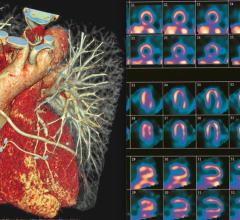
September 13, 2016 — The American Medical Society for Sports Medicine (AMSSM) last week released a new position statement on cardiovascular pre-participation screening for athletes. The statement discusses current evidence and knowledge gaps while offering recommendations and future directions.
AMSSM formed a task force to address the controversial topic of cardiovascular screening in athletes and the potential addition of an electrocardiogram (ECG) to the standard history and physical examination. The position statement presents several new paradigm shifts in thinking about cardiovascular screening in athletes — namely a reassessment of the current standard, recognition of the differential risk of sudden cardiac arrest and death (SCA/D) in different athlete populations, a new framework to assist physicians when considering a screening ECG and respect for physician autonomy to choose the most appropriate screening strategy.
Developed by an expert panel of primary care sports medicine physicians representing all perspectives on cardiovascular screening, the statement provides a balanced assessment of the current evidence and knowledge gaps regarding cardiovascular screening in athletes. The position statement is concurrently being published in the Clinical Journal of Sport Medicine, the British Journal of Sports Medicine and Current Sports Medicine Reports.
The primary goal of cardiovascular screening in competitive athletes is to identify cardiac disorders at elevated risk of SCA/D and to reduce morbidity and mortality through individualized and disease-specific management. The current pre-participation history and physical examination, while pragmatic and widely practiced, is limited in its ability to identify athletes with conditions at risk for SCA/D.
ECG screening does offer enhanced detection of cardiac disorders at potential risk of SCA/D, but it also increases the potential for false-positive results and the associated downstream consequences. “Evidence suggests medical management can reduce the risk of sudden death for several of the cardiac disorders we are looking for. The question is whether we can accomplish early detection and proper management without causing undue harm,” said Jonathan Drezner, M.D., lead author and co-chair of the statement and an AMSSM past president. In choosing a screening strategy, sports medicine physicians should consider the individual risk of the athlete, physician expertise and available cardiology resources for accurate ECG interpretation and the secondary evaluation of ECG abnormalities, as well as their assessment that a particular screening strategy will provide more benefit than harm.
“In the absence of clear evidence, we must respect physician autonomy to implement the most appropriate screening strategy unique to their athlete population and community resources,” stated Fran O’Connor, M.D., MPH, also co-chair of the statement and an AMSSM past president. Widely practiced and accepted screening standards are not perfect and should undergo continual revision as new data emerges.
ECG screening is often framed as a choice between universal, mandatory screening or no screening at all. “A single, universal strategy or ‘one-size-fits-all’ model may not be appropriate for all athletes or all physicians,” Drezner added. Accordingly, AMSSM supports continued research in this area to validate the optimal strategies for reducing SCA/D in athletes.
For more information: www.journals.lww.com, www.bjsm.bmj.com


 January 23, 2024
January 23, 2024 








